[Video] The 9 Hallmarks of Aging, Episode 5, Mitochondria – with Dr. Guilhem Velvé Casquillas
Mitochondria: definition
We will discuss here a fifth identified cause of aging: mitochondrial dysfunction.
Mitochondria are organelles present in each of your cells. Their role is to maintain cellular respiration and the creation of ATP (adenosine triphosphate), which is the main source of energy essential for all the mechanisms of the human body. In short, mitochondria are the power plants of your cells.
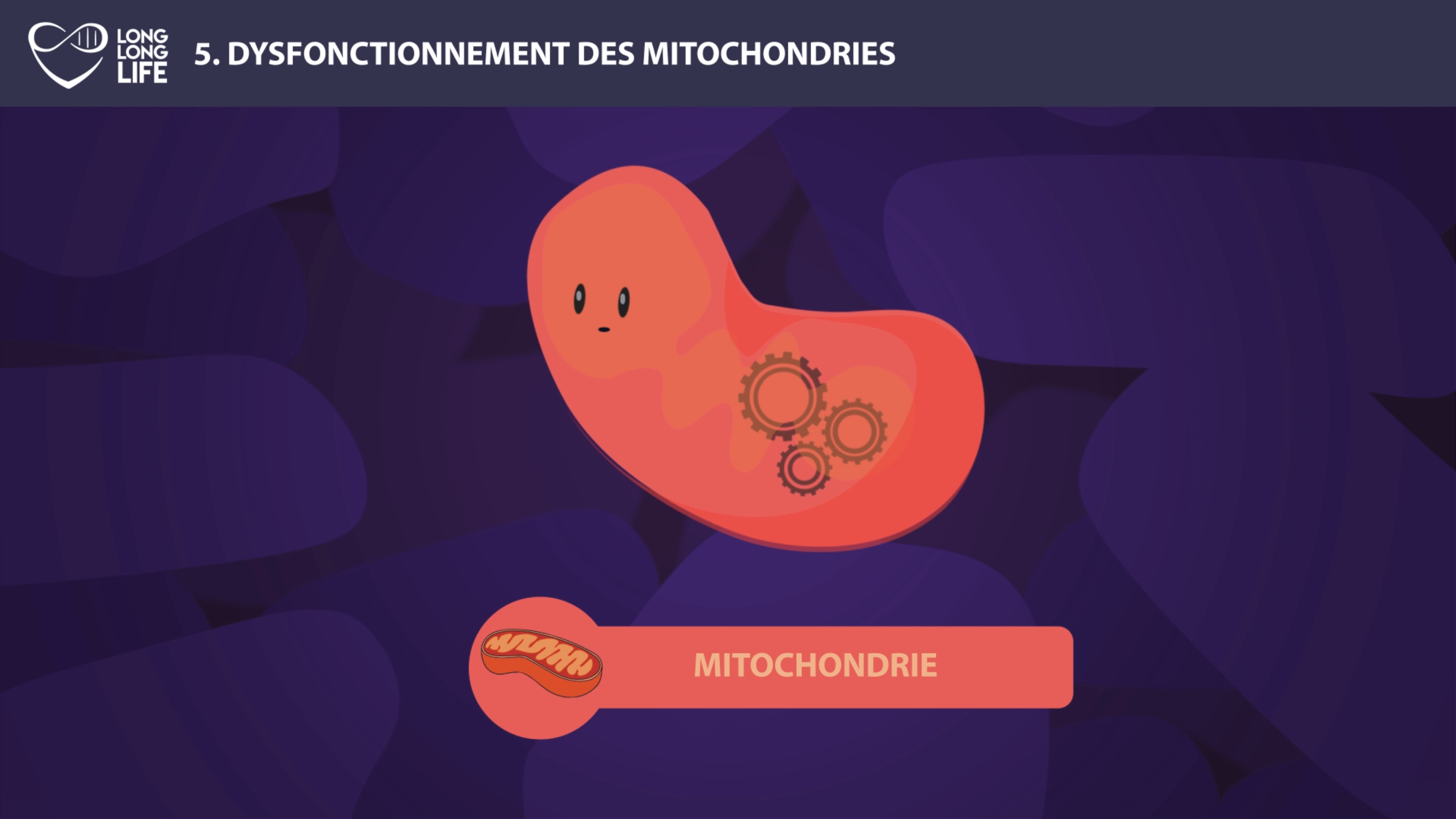
Note that, outside the nucleus, mitochondria are the only organelles in your cells that have their own DNA, this is called mitochondrial DNA. So in each of your cells, you have not only the DNA of the nucleus, transmitted by both your parents, but also the DNA of your mitochondria, transmitted by your biological mother. However, not all the proteins present inside your mitochondria that allow them to function are derived from mitochondrial DNA.
To better understand why mitochondria dysfunction, studies have been done on the evolution of mitochondrial function at different life stages. These studies showed that mitochondrial dysfunction was not only a marker of aging, but occurred without significant modification of mitochondrial DNA. This suggests that a mutation in mitochondrial DNA is not the only cause of dysfunction related to the age of the mitochondria, and that it is due to one or more other phenomena.
Mitochondria and free radicals
So, who are our suspects?
First, oxidative stress. It is a mechanism that involves, among other things, molecules called free radicals. These free radicals have, as their name suggests, atoms that are free to bind other molecules by oxidation and thus create damage to your cells. Aging has long been linked to wear and tear caused by oxidation, but the reality may be more complex. Recent studies have shown that increasing levels of antioxidants, which fight free radicals, has no effect on life expectancy, while increasing the level of free radicals in some models can increase life expectancy.
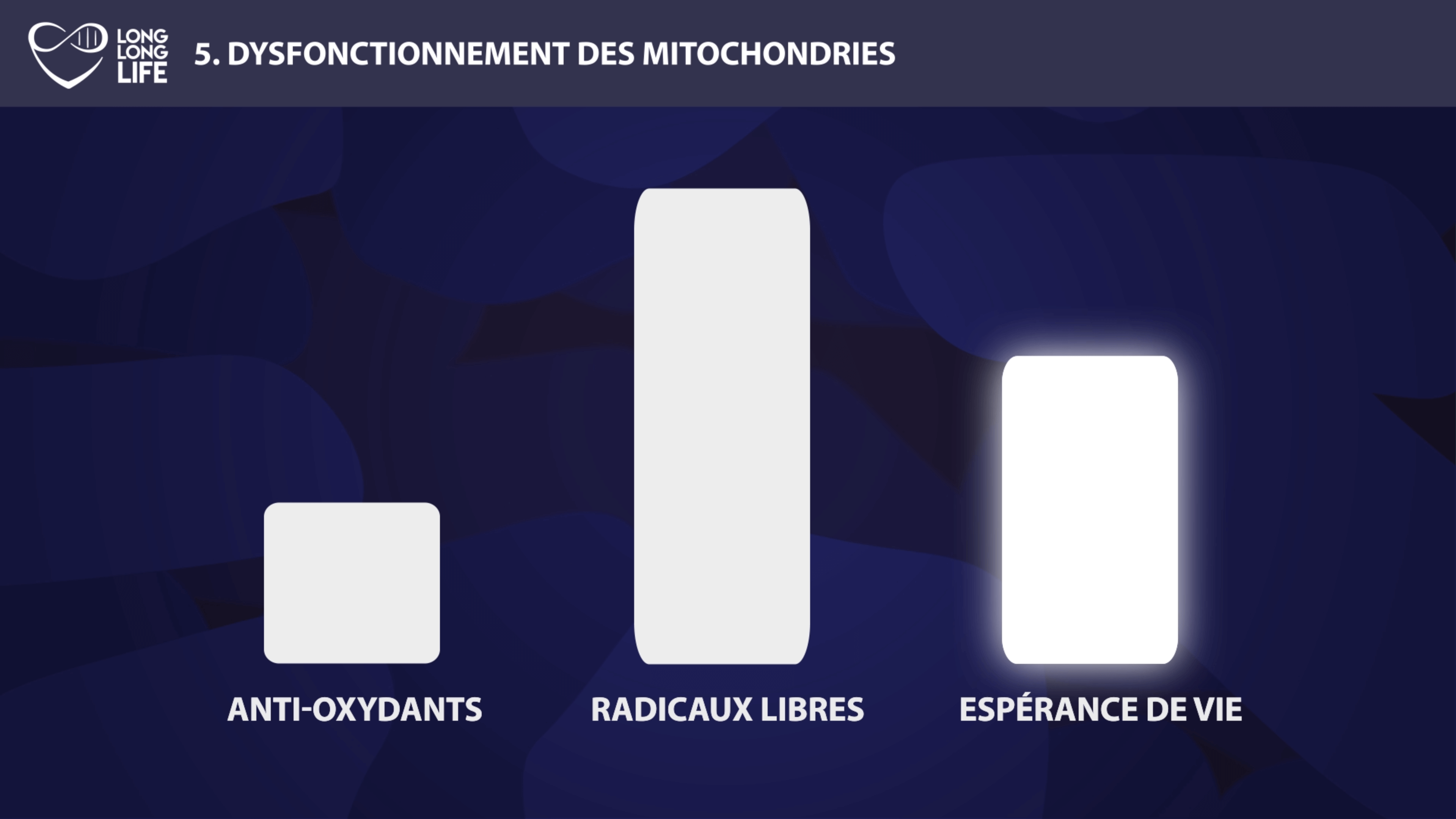
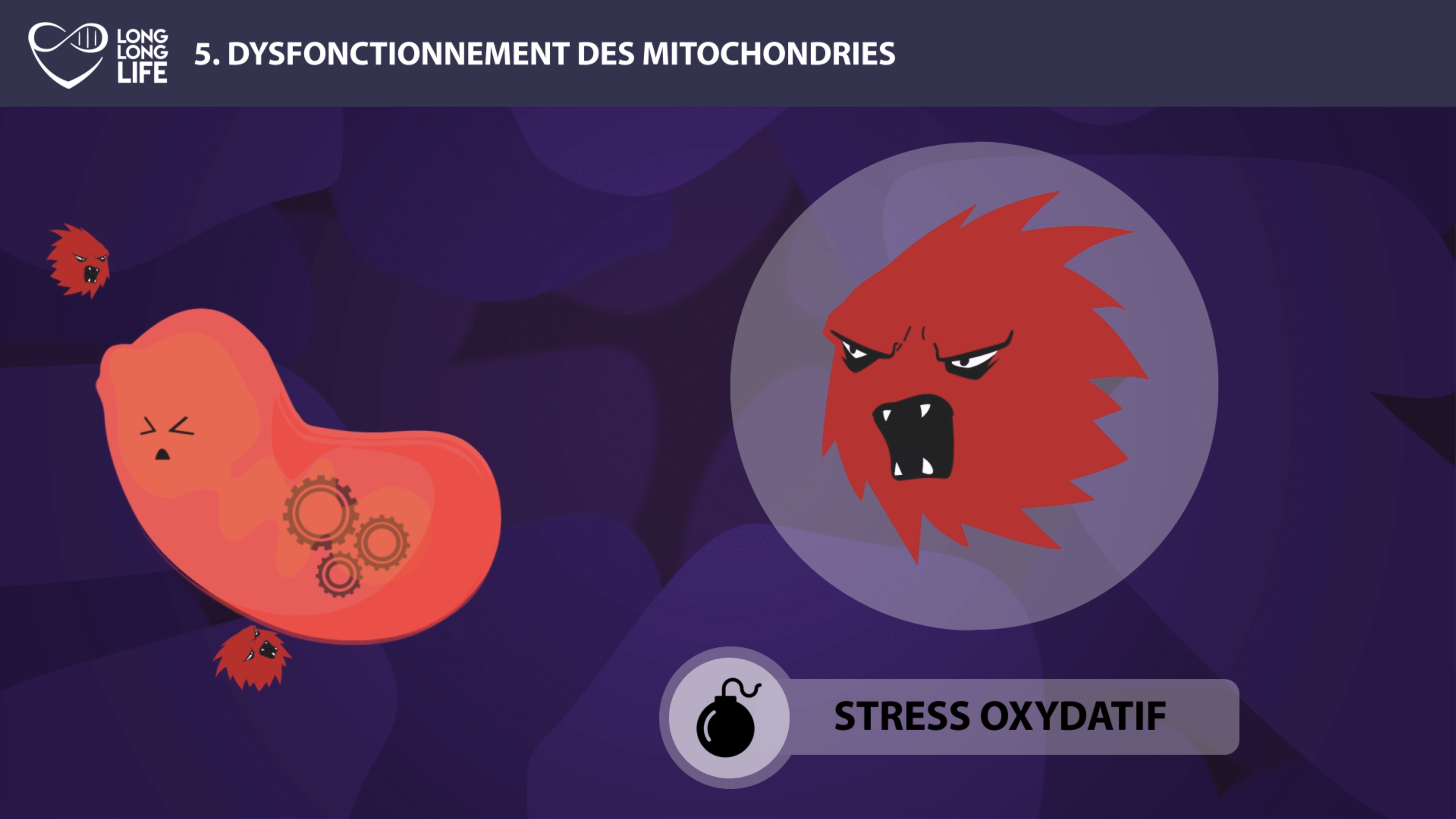
One possible explanation: this oxidative stress would force the activation of potentially beneficial regenerative mechanisms, such as autophagy, which we mentioned earlier. We remind you that autophagy is above all a means of defending your cells: when an organelle no longer functions properly, the cell will cannibalize it to allow its survival. Autophagy of damaged mitochondria, also called mitophagy, is the main route of elimination of these mitochondria. Free radicals released by oxidative stress could generate a beneficial survival signal.
In theory, it is now assumed that as we age, cell stress and the number of cell lesions will increase. The levels of free radicals in the body would increase in parallel, in order to preserve the body. Above a certain point, these levels would stop maintaining cellular balance and could aggravate age-related problems.
The role of free radicals is therefore not yet clear to scientists, it is an issue that is really debated.
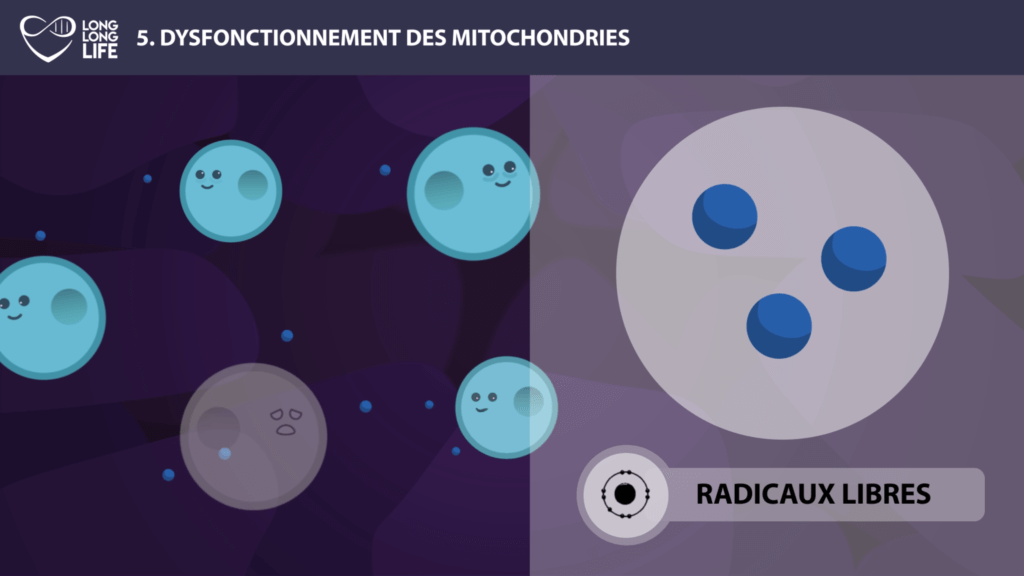
Mitochondria: cellular communication
The second cause that would link the mitochondria to aging could be communication between the cell nucleus and its mitochondria.
This communication is necessary for mitochondrial replication, so it is essential for the cell. As we age, communications between the nucleus and mitochondria deteriorate. This miscommunication can lead to the deterioration of mitochondria, a phenomenon that in turn causes the cell to age by decreasing the available energy.
Mitochondria: mitochondrial DNA mutations
And finally, however, it is not excluded that mutations in our mitochondrial DNA may also come into play. So we’re going to talk about them a little bit, even if they’re not necessarily predominant.
The involvement of mitochondrial DNA mutations in the aging process has been proven: it has been shown that deterioration of mitochondrial DNA can lead to premature aging and shorten life span.
Although the impact of these mutations is not as deleterious as nuclear DNA mutations, scientists believe that mitochondrial DNA is likely to be more sensitive to mutations. Indeed, a mitochondria, a kind of energy center of your cells, is not a comfortable area to avoid genetic mutations. Especially since the repair mechanisms of mitochondrial DNA are much less advanced than those of nuclear DNA.
However, rest assured, unlike nuclear DNA, there are several hundred mitochondria in each of your cells. However, the many copies of mitochondrial DNA in each of your cells probably mitigate the consequences of a lesion on this type of DNA. Despite this, it has been shown that the number of mitochondria decreases with age in the liver cells of mice, rats and humans, and therefore the amount of mitochondrial DNA will decrease over time.
To sum it up, this would explain why the accumulation of mutations in the mitochondrial genome could gradually take an increasingly important place in the aging process.
Dr Guilhem Velvé Casquillas

Author/Reviewer
Auteur/Relecteur
Physics PhD, CEO NBIC Valley, CEO Long Long Life, CEO Elvesys Microfluidic Innovation Center
More about the Long Long Life team
Docteur en physique, CEO NBIC Valley, CEO Long Long Life, CEO Elvesys Microfluidic Innovation Center
En savoir plus sur l’équipe de Long Long Life


![[Video] The 9 Hallmarks of Aging, Episode 9, Inflammation [FINAL] – with Guilhem Velvé Casquillas PhD](https://www.longlonglife.org/wp-content/uploads/2019/05/Inflammation-Long-Long-Life-longévité-vieillissement-transhumisme-inflammaging-1-218x150.png)
![[Video] The 9 Causes of Aging, Episode 8, Stem Cells – with Dr. Guilhem Velvé Casquillas cellules souches long long life transhumanisme longévité vieillissement arcade](https://www.longlonglife.org/wp-content/uploads/2019/05/cellules-souches-long-long-life-transhumanisme-longévité-vieillissement-arcade-218x150.png)
![[Video] – The 9 Causes of Aging, Episode 7, Senescence – with Dr. Guilhem Velvé Casquillas sénescence long long life longévité transhumanisme vieillissement cellules sénescentes](https://www.longlonglife.org/wp-content/uploads/2019/05/sénescence-long-long-life-longévité-transhumanisme-vieillissement-cellules-sénescentes-1-218x150.png)
![[Video] – The 9 Causes of Aging, Episode 6, Nutrient Detection – with Dr. Guilhem Velvé Casquillas nutriments 1 long long life transhumanisme longévité vieillissement](https://www.longlonglife.org/wp-content/uploads/2019/05/nutriments-1-long-long-life-transhumanisme-longévité-vieillissement-218x150.png)
![[Video] The 9 Hallmarks of Aging, Episode 5, Mitochondria – with Dr. Guilhem Velvé Casquillas mitochondria long long life longevity transhumanism aging free radicals (2)](https://www.longlonglife.org/wp-content/uploads/2019/07/mitochondria-long-long-life-longevity-transhumanism-aging-free-radicals-2-218x150.png)
![[Video] Eurosymposium on Healthy Ageing, Brussels, 2018 Eurosymposium on Healthy Aging](https://www.longlonglife.org/wp-content/uploads/2019/07/P1310252-218x150.jpg)
![[Video] The 9 Causes of Aging, Episode 4, Poorly Folded Proteins – with Dr. Guilhem Velvé Casquillas protéine long long life 9 causes du vieillissement longévité transhumanisme](https://www.longlonglife.org/wp-content/uploads/2019/05/protéine-long-long-life-9-causes-du-vieillissement-longévité-transhumanisme-218x150.png)

![[Video] The 9 Hallmarks of Aging, Episode 2, Telomere shortening – Guilhem Velvé Casquillas, PhD Télomère - Long Long Life 9 causes du vieillissement longévité transhumanisme](https://www.longlonglife.org/wp-content/uploads/2019/06/Télomère-Long-Long-Life-9-causes-du-vieillissement-longévité-transhumanisme-1-218x150.png)
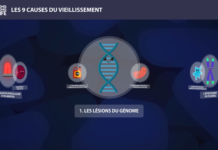

![[Video] – The 9 Causes of Aging, Episode 7, Senescence – with Dr. Guilhem Velvé Casquillas sénescence long long life longévité transhumanisme vieillissement cellules sénescentes](https://www.longlonglife.org/wp-content/uploads/2019/05/sénescence-long-long-life-longévité-transhumanisme-vieillissement-cellules-sénescentes-1-324x160.png)
